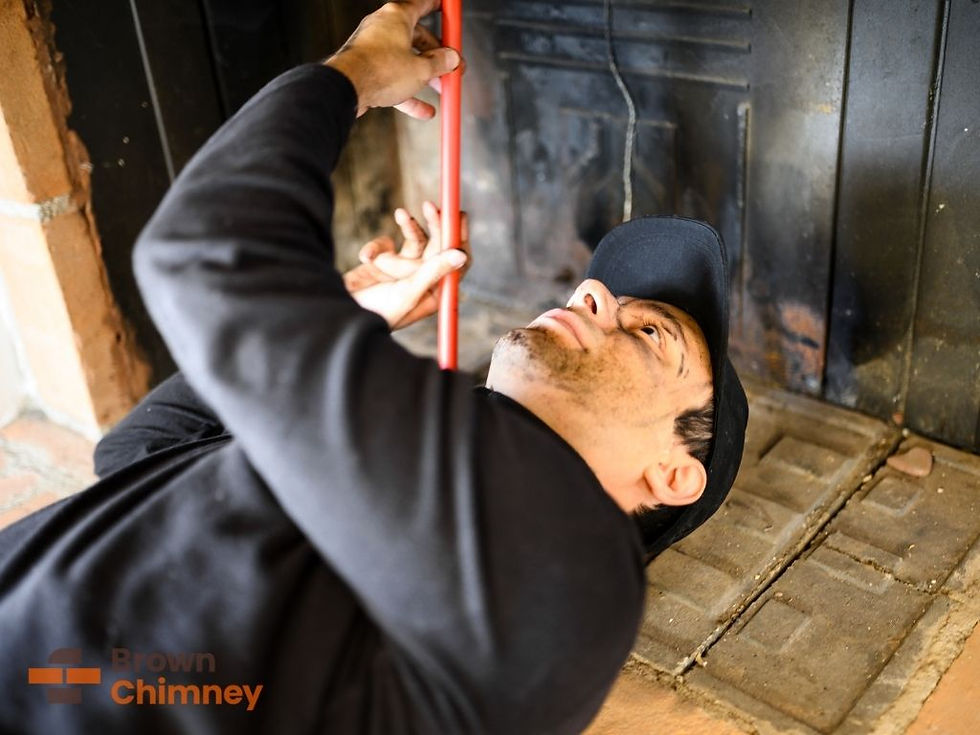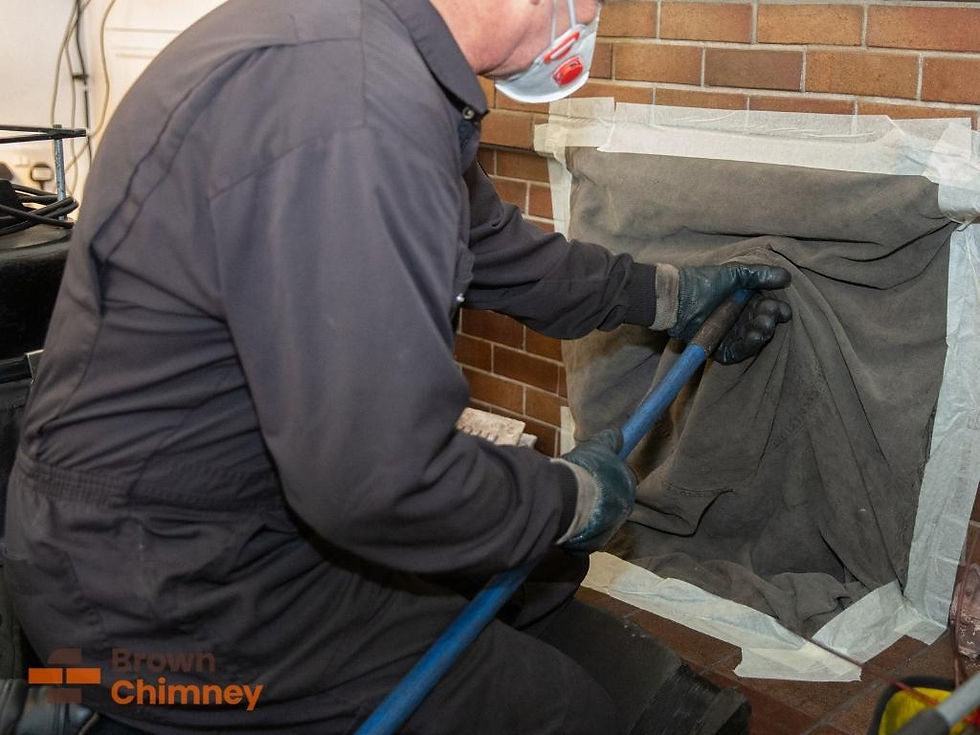What Really Happens During a Chimney Cleaning? A Pro-Level Breakdown
- Geri Mileva

- Aug 25
- 4 min read

A lot of people assume chimney cleaning is easy—just sweep out some ash and you’re done. It seems messy, sure, but not urgent.
What most people don’t realize is that a lot happens outside of the sweeping itself. A single built-up and hardened layer of creosote might not look dangerous, but it can wreck your liner if left alone. Professional chimney cleaning isn’t just about soot; it’s about keeping smoke and heat moving safely. It also gives you a chance to catch cracks or wear before they get worse.
Professional sweeps can spot things before the tools come out—and they’re still checking after the mess is gone. What, then, actually happens in a proper chimney cleaning? And why does each step carry more weight than it seems?
Why chimney cleaning is more than just a brush and a vacuum
A real cleaning doesn’t start with tools—it starts with a look. Certified sweeps check how air moves, where buildup sits, and whether moisture or creosote has left early signs of trouble. That first read tells them what kind of work the chimney needs. They also follow national guidelines, like the CSIA inspection levels, to figure out the right approach.
The tools depend on what they find. Some chimneys only need a light brushing. Others call for drill-powered rods, stronger vacuums, or sealed-off areas to contain the mess. Good sweeps adjust as they go.
What actually happens during a chimney cleaning
Chimney experts like Brown Chimney do more than just clear debris. They track the condition of your system in real time and adjust their process based on what they see. Here’s how a professional cleaning typically plays out:
Prepping the space
Before anything starts, technicians take steps to protect your home. They lay down drop cloths and cover the floor area around the fireplace. A vacuum with a HEPA filter runs throughout the job to catch dust and soot. If needed, they may also ask you to move nearby furniture or clear the mantle to avoid stray debris settling on it.
Checking what’s inside
Once the setup is in place, the technician checks the flue interior. They either use a flashlight or a chimney camera to spot signs of trouble, like creosote layers, bird nests, or moisture damage. Left alone, these can block ventilation or start to eat away at the structure.
Using the right tools
Cleaning methods vary. Light soot may only need a brush, but hardened creosote calls for drill-powered rods and more pressure. The right tools depend on what’s inside.
Cleaning the flue and smoke shelf
This is the part where most homeowners think a DIY would work, thinking it’s easy enough to put the rods up the flue and collect soot. However, a proper cleaning reaches beyond the visible areas. The sweep clears the flue walls, the smoke shelf just above the damper, and any hidden ledges where buildup collects. The vacuum keeps running to control the mess in real time.
Clearing out the firebox
Once the flue is done, the sweep moves to the firebox, the base where ash collects. They remove leftover ash and check for cracks, loose joints, or signs of heat damage—clues that something deeper might be off with the venting.
Reviewing what they found
After cleaning, the sweep does a final check. They usually take photos to show what was cleared and what the chimney looks like now. If they find signs of damage, they’ll explain what needs to be fixed.
Cleaning up the space
Once the job’s done, the cleaners remove the coverings, vacuum the area, and leave the space clean. The goal is to leave it better than they found it.
What professionals do that DIY methods can’t
You can buy a brush, watch a tutorial, and give it a go—but that mostly skims the surface. Professionals know what to check beneath it.
Trained chimney cleaners don’t just look at dust levels. They study the way smoke flows, the pattern of soot, even the texture of the creosote. Some buildup patterns can suggest overfiring or draft issues that the homeowner hasn’t noticed.
There’s also a risk most DIY guides don’t mention: damage from the cleaning itself. Spinning the wrong brush at the wrong speed can chip tile liners. You might not feel it at first, but small cracks can open paths for heat to escape, let water in, or cause slow damage that weakens the structure.
Then there’s the part no brush can cover: the paperwork. If a fire breaks out and you’ve been doing your cleaning, some insurance providers may refuse the claim. On the other hand, a certified sweep gives you inspection records. You will have documents showing that the work was done right and that your chimney met safety standards. That kind of record can protect you when it counts, and it’s something no hardware-store brush can offer.
Not sure if your chimney’s due? Some signs are easy to spot: black marks around the fireplace, a strong campfire smell even when it’s not in use, or smoke backing into the room. These all point to a buildup or poor venting that needs a closer look.
Conclusion: Why it matters long after the cleaners leave
A clean chimney isn’t just tidy, it runs safer and more efficiently. A proper cleaning helps catch issues early, before they turn into expensive repairs or safety risks. If you’re using your fireplace at all during the cold months, yearly maintenance isn’t optional. If you’re unsure, Brown Chimney can help you figure out the right timing based on how often you use your fireplace.
Brown Chimney crews know how to do the job right and give homeowners a clear read on what’s in good shape and what isn’t. It’s one of the most reliable ways to keep your home winter-ready. If it’s been a while since your last cleaning, now’s a good time to schedule a checkup.



